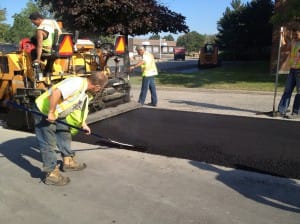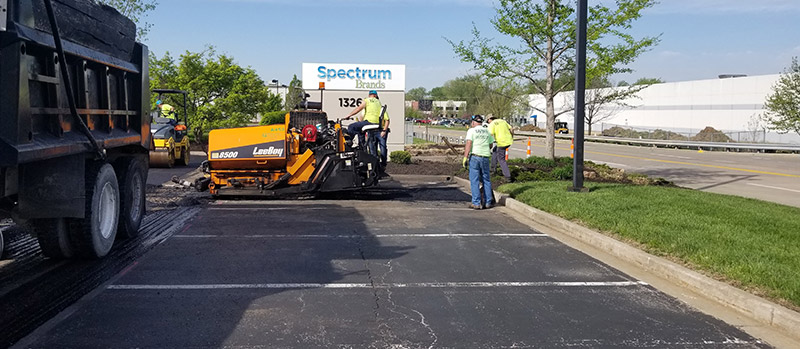Our A1 Professional Asphalt & Sealing Llc PDFs
Our A1 Professional Asphalt & Sealing Llc PDFs
Blog Article
Examine This Report about A1 Professional Asphalt & Sealing Llc
Table of ContentsSome Ideas on A1 Professional Asphalt & Sealing Llc You Should KnowAll About A1 Professional Asphalt & Sealing LlcThe 20-Second Trick For A1 Professional Asphalt & Sealing LlcGetting The A1 Professional Asphalt & Sealing Llc To WorkAll about A1 Professional Asphalt & Sealing Llc

The oil in a vehicle engine is not just oil. It includes a range of ingredients to improve the vehicle's efficiency. These include polymers, viscosity modifiers, heat stabilizers, additional lubricants, and wear additives. The REOB consists of all the additives that remained in the waste oil as well as the wear metals from the engine (primarily iron and copper).
By making many blends utilizing various REOB examples and various asphalt binders, the variations mainly can be averaged out. Several States offered examples of recognized REOB structure to TFHRC researchers, who analyzed the samples to compare the percentage of included (recognized) REOB to the discovered (tested) quantity. The evaluations revealed a similar portion of included and found REOB.
A1 Professional Asphalt & Sealing Llc for Beginners
They got an overwhelming action. The TFHRC researchers evaluated 1,532 examples from 40 States, one Canadian province, and 2 Federal Lands Highway divisions. They examined each example twiceamounting to even more than 3,000 analyses. None of those States understood that the asphalt they were buying consisted of REOB. One State insisted its examples had no REOB.
Of the 1,532 samples examined, 12 percent had REOB, and some consisted of significantly high degrees of it at 1020 percent. The highest possible level was 34 percent in an example from Texas, which TxDOT had utilized in a patching compound. This screening also disclosed the presence of phosphoric acid in 11 percent of the examples, and 2 percent had ground tire rubber.
Two years earlier at TRB's yearly meeting, the Federal scientists held an REOB workshop and presented the searchings for of their lab evaluations to a standing room-only crowd. Some firms do not particularly outlaw REOB, they do enforce physical examinations that preclude its useeffectively a ban. Others do not outlaw it by requirements, however have arrangements with asphalt providers to stay clear of making use of REOB
6 Simple Techniques For A1 Professional Asphalt & Sealing Llc
A handful do permit REOB, some within particular restrictions. Ohio and Texas limitation levels to less than 5 percent of the asphalt. To create a trusted test method that all States can use, the TFHRC researchers established a round-robin test plan. The individuals are 11 State highway companies (Illinois, Massachusetts, Minnesota, Mississippi, Montana, North Carolina, Oklahoma, South Carolina, Texas, Vermont, and Wyoming), 2 independent screening laboratories, the Ministry of Transport in Ontario, Queen's University in Ontario, and an Ontario paving specialist.
In total, the scientists prepared and delivered 720 blends. The participants are testing the examples independently using the standards given by the TFHRC scientists. The round-robin screening is almost completed, and TFHRC remains in the process of accumulating the outcomes. The outcome will be a recommended AASHTO examination approach that any type of State can embrace and utilize (cold mix vs hot mix asphalt).
The sidewalk with REOB, which is located 0.6 mile (1 kilometer) from the pavement without REOB, has identical subgrade, web traffic density, and climate. The sector of Highway655 with 5 to 10 percent REOB showed considerable fracturing. In this instance, the visibility of REOB was the determined reason for cracking at a low temperature levels.
A section of test pavement in Minnesota (MN1-4) found to consist of REOB additionally broke prematurely. The pavement performed well for the first 3 to 4 years, however after that started to break.
The 9-Minute Rule for A1 Professional Asphalt & Sealing Llc
The examinations were not comprehensive, but they revealed that at levels of 6 percent or even more, the tensile toughness of the asphalt went down considerably. At a degree of 3.5 percent REOB, the variation in the physical examination approaches was above the effect of REOB. In truth, it was tough for scientists to assess whether REOB visit the website existed.

One binder specification taken into consideration is the difference in between the reduced temperature vital specification temperature for stiffness (S) in the bending beam rheometer and the bending beam of light rheometer creep slope (m-value) kept in mind as Tcritical. Two independent research study groups, one from AASHTO and the other from the Asphalt Institute, wrapped up that more study is required on the use of REOB in asphalt.
Formerly, all asphalt screening gauged design buildings such as tightness. These examinations do not reveal what products had been added to the asphalt. One example received during the TFHRC study had a very unusual analysis. The example had the following examination outcomes: Superpave PG 64-28 with a heat quality of 67.3 Tcritical on the bending beam of light rheometer was 6.7 levels Celsius.

Getting My A1 Professional Asphalt & Sealing Llc To Work
These results demonstrate there are weak points in the standard design screening protocols that may be exploited. The manufacturer may have a financial advantage and the product passes all the standardized tests, however the product might not be helpful to making certain long-lasting performance. To resolve this issue and the development of new asphalt additives and extenders, TFHRC is beginning a research program to use handheld spectroscopic devices, x-ray fluorescence spectroscopy, and Fourier change infrared spectroscopy to make it possible for analyses to be done in the area instead of having to take examples back to the laboratory.
Report this page